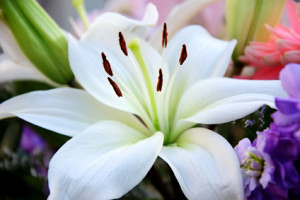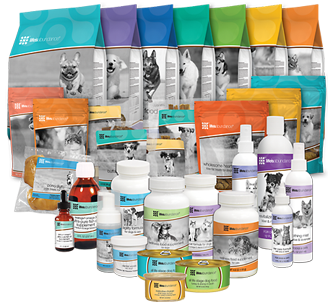Protecting your cat from toxic plants
 Cats love to nibble on grass. Many cat owners know that.
Cats love to nibble on grass. Many cat owners know that.
But what some might not know is that not all greenery is safe for felines.
Both plants found outdoors in yards and indoors in pots can be harmful to cats.
The most dangerous plants for cats are members of the lily family, said Dr. Tina Wismer, medical director of the ASPCA Animal Poison Control Center. While the exact toxic component remains unknown, cats appear to be the only species sensitive to its deadly effects. A cat licking or chewing on the plant may develop kidney failure, which could prove fatal.
Also dangerous, Wismer said, are many common houseplants (dieffenbachia, pothos, philodendron, etc.) because they contain compounds that can cause vomiting, drooling, and difficulty breathing.
Other common plants that are dangerous to cats include:
- Rhododendron. This species contains a toxic substance known as grayanotoxin, which can be dangerous if ingested. This causes stomach upset, but it can also affect heart rate and the nervous system. A common plant found in this family is the azalea.
- Plants with Cardiac Glycoside. This poison can cause life-threatening damage to the heart. Examples of these types of plants include oleander (Nerium oleander), lily-of-the-valley (Convallaria majalis), foxglove (Digitalis purpurea), certain milkweeds (Aesclepias spp.), and squill (Virginea maritime).
- Castor Beans (Ricinus communis). The toxic ingredient in this plant is ricin, which is one of the most potent toxins known to man. The castor bean seeds must be crushed to release the toxin, but even small amounts of ricin can be fatal.
- Cycad Palms (Cycas, Zamia). These ornamental plants are found naturally in areas of sandy soil. The toxin cycasin can cause severe liver failure in a cat.
- Yews (Taxus Genus). Many types of yew bushes are used in landscaping, and they also grow naturally. The toxic ingredient in these bushes is taxane, which can cause seizures, lack of coordination, difficulty breathing, and cardiac failure.
- English Ivy. This Old World vine with lobed evergreen leaves and black, berry-like fruit is popular indoors as a houseplant and outside as an in-ground or potted plant. But it can lead to abdominal pain, drooling, vomiting, and diarrhea in cats.
So what to do? Give up the plants?
Not necessarily.
Be proactive and keep plants and cats in separate areas of the home. Placing motion-activated deterrents, such as ones that emit a burst of air, near plants may work to keep some animals away, Wismer said.
But the best option is to keep toxic plants out of the house. Cat grass (usually rye or wheat grass) is safe for felines and can be grown indoors. Cat nip is another feline favorite that’s easy to grow inside.
If a cat does ingest a poisonous plant, pet owners should call their veterinarian right away. Relay the name of the plant, when the cat ate it, and if the cat is experiencing any problems. The veterinarian will recommend further treatment if necessary.
For an extensive list of plants to keep away from felines, visit the ASPCA online.


 Life's Abundance Pet Foods
Life's Abundance Pet Foods
Leave a Reply